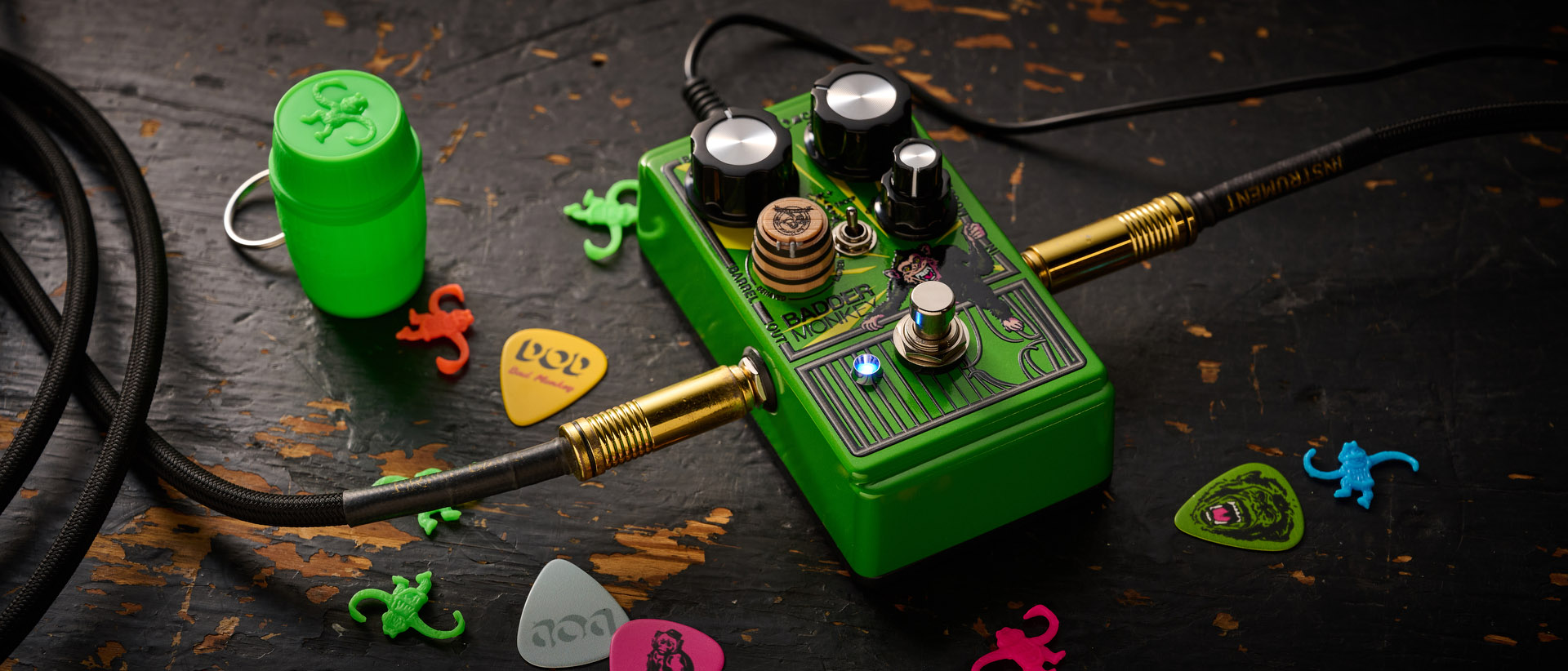Five Must-Know ii-V-I Chord Subs
Learning how to play and apply these subs to your chord work and single-note solos can add an extra layer of harmonic sophistication to your playing.

As jazzers know, learning how to play various chord substitutions is an important part of understanding and applying the jazz language to your comping and soloing ideas. In order to learn how to bring some common subs into your playing, today we’ll explore five important and often-used ii-V-I chord subs that come from various famous tunes—and the playing of many great jazz guitarists over the years.
By learning how to play and apply these subs to your chord work and single-note solos, you will not only be adding an extra layer of harmonic sophistication to your playing, but you'll be bringing a nice “inside outside” touch to your lines and chords, an important ingredient in every great jazz guitarist's repertoire.
iim7 V7 Imaj7 Progression
Before we dig into the five important chord subs listed below, here's a quick review of the ii V I chord progression for those who are new to the subject. Whereas in rock and blues, the I-IV-V chords make up the most commonly used progression, in jazz we replace the IV with the iim7 chord. The iim7-V7-Imaj7 progression can be found in countless tunes and is essential learning for anyone exploring jazz guitar.
Here's an example of a iim7 V7 Imaj7 chord progression written out in the key of C major. Start by learning these shapes in C, then take them to other keys and other shapes around the neck as you explore this common progression further in the practice room.

iim7 bII7 Imaj7 Progression
Probably the most commonly used sub in jazz, the tritone sub, can be seen in bar two of the following progression. Here, we are replacing G7 with a 7th chord found a tritone away from that root, Db7. This builds a iim7-bII7-Imaj7 progression, with the Dm7 moving down by half-step to Db7, which then also moves down by half-step to Cmaj7.
All the latest guitar news, interviews, lessons, reviews, deals and more, direct to your inbox!
Since this sub is so common, if you learn one progression from this lesson, then this is it. Practice playing these three chords using different shapes around the neck, and then take it to other keys as well. You also can use this sub in your soloing phrases, so you can also work out the arpeggios and scales for these chords in order to be able to create lines using the tritone sub in this key, and others, across the neck.

bvim7 bII7 Imaj7 Progression
Now we can add a iim7 to the V7 (Db7) to form a sub ii-V in the first two bars of the progression that is then resolved into the Imaj7 chord in bar 3. The new ii V, Abm7-Db7, comes from the tritone sub of G7 that we mentioned earlier. To keep things related to C, I have written it out as bvm7 bII7, which helps to see how these chords relate the the parent key of C.
Since the ii and V are so closely related in jazz, you can almost always add a iim7 to a V7, or a V7 to a iim7, if you only have one or the other in your progression. This is the reasoning behind adding the Abm7 before the Db7, building a iim7 V7 progression, in this group of subs.

iim7 V7 bvim7 bII7 Imaj7 Progression
Here, we are going to take both ii-V’s that we’ve explored so far, ii-V and bvim7 bII7, and play them back to back to form a longer chord substitution. Essentially, you are playing the original chords in bar 1, Dm7-G7, and then playing the ii-V sub from the previous example in bar 2, before resolving to the Imaj7 in bar 3.
By combining the original chords with a ii-V sub, you are adding more chords to the progression while sticking closely to the original changes and one set of subs, as opposed to running a series of subs such as back cycling or the Coltrane Matrix. Explore these changes in the practice room. Comp them over a bass line, solo with them using arpeggios, scales or licks, and bring them to tunes you are working on in order to get the most out of these changes in the woodshed.

biiim7 bVI7 iim7 V7 Imaj7 Progression
The next sub we will explore is similar to what we find in John Coltrane's "Stablemates.” Here, you are playing a ii-V one half-step higher than the original key, in bar 1, before returning to to the normal ii V I in the second and third bars of the progression. In essence, you are playing a ii V, then moving it down one half-step (one fret) to return to the original key, and then resolving that to the Imaj7 chord to end the phrase.
In order to get a better understanding of this substitution, check out the tune “Stablemates,” and jam along to it in the practice room in order to hear how these chords sound in a musical context.

biim7 bV7 iim7 V7 Imaj7 Progression
The last sub, we’ll look at comes from the John Coltrane tune “Moment’s Notice.” Here, you are playing two ii-V’s in a row, as we have seen before, but this time the first ii-V is played a half-step before the original key.
In effect, you are playing a ii-V, then repeating it one half-step (one fret) higher on the neck. This brings a sense of “outside inside” flavor to your comping and soloing when applying these chords to a musical situation. Check them out in this key, and others across the neck, and to hear them in context, listen to and jam along with “Moment’s Notice” in your practice routine.

As you can see, by having just a handful of common subs to apply to your ii-V-I chords and soloing chops, you can bring a lot of tension and release to your playing. Try working on one of these progressions at a time. Work out chord voicings that you like, practice the arpeggios for each chord and the scales for improvising. Then, once you have worked one out on it’s own in one key, bring it to other keys around the neck, as well as apply one or more of these subs to tunes you know or are working on in the practice room.
What do you think of these ii-V-I chord subs? Share your thoughts in the comments section below.
Matt Warnock is the owner of mattwarnockguitar.com, a free website that provides hundreds of lessons and resources designed to help guitarists of all experience levels meet their practice and performance goals. Matt lives in the UK, where he is a senior lecturer at the Leeds College of Music and an examiner for the London College of Music (Registry of Guitar Tutors).
Matt Warnock is the owner of mattwarnockguitar.com, a free website that provides hundreds of lessons and resources designed to help guitarists of all experience levels meet their practice and performance goals. Matt lives in the UK, where he teaches Skype guitar students all over the world, and is an examiner for the London College of Music (Registry of Guitar Tutors).
